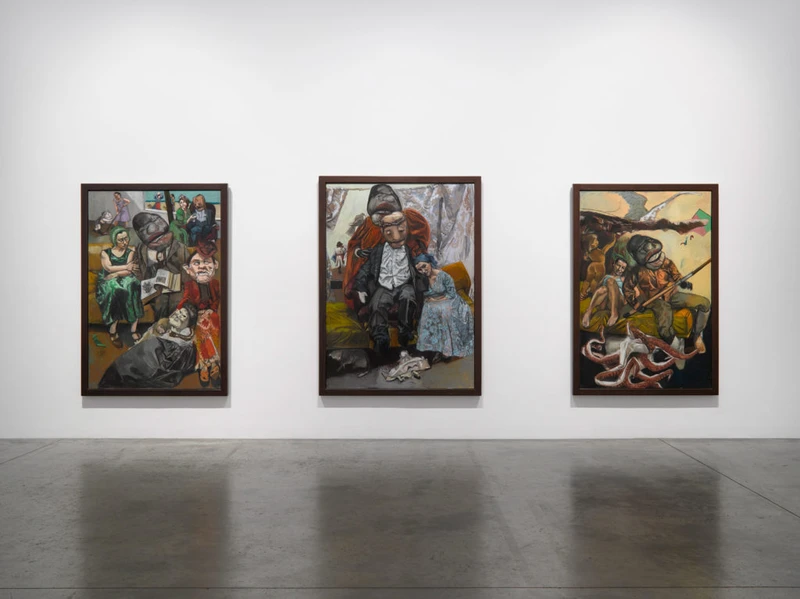Paula Rego: The Forgotten
19 Nov 2021-12 Feb 2022


Victoria Miro is delighted to announce The Forgotten, a major exhibition by Paula Rego. To be held across the entirety of its Wharf Road spaces, the gallery’s first solo exhibition by the artist brings together significant individual works and important series, many rarely shown, drawn principally from the past 20 years.
Celebrated as a peerless storyteller, Paula Rego has often brought immense psychological insight and imaginative power to the stories that we try to suppress or tell ourselves only in private. Testament to a career spent exploring these hidden narratives and their associated stigmas, The Forgotten encircles themes and subjects that are often masked or concealed – out of politeness or embarrassment – such as mental illness and old age.
The exhibition includes works inspired by episodes from the artist’s childhood in Portugal, including the large-scale La Marafona, 2005, a tender portrayal that refers to the burden of her beloved father’s depression. Rego considers her own depression to have been inherited from her father and her identification with his suffering – and its legacy – is explored elsewhere in the exhibition. For the first time, La Marafona will be shown with works from the 2007 Depression Series, a suite of large-scale pastels born out of an especially debilitating depressive episode and Rego’s attempts to draw her way out of it.
The relationship between daughters and their mothers, a recurring theme in Rego’s art, is prevalent in a number of works such as Nursing, 2000, a large-scale monochrome work which delivers successive waves of shock: bodily transformation wrought by age and the apparent ambivalence of the carer.
Also on view are a number of self-portraits made in 2017, soon after the artist fell and badly injured her face. While Rego’s presence in her work – as creator, narrator or putative subject – is always palpable, she has made self-portraits only a handful of times in her career. In these characteristically unflinching works, Rego deftly captures her own likeness, bruised and out of shape, not as a means of expressing pain but because its physical effects gave her a reason to draw herself. As she said at the time, ‘I didn’t like the fall… but the self-portraits I liked doing. I had something to show.’ The power of transformation – caused by age, accident or anguish – is one theme of an exhibition that reveals Rego’s creative inspiration and motivation, and the candour of her vision, sustained across narratives, through motifs and over decades.
About the artist:
Born in 1935 in Lisbon, Portugal, Dame Paula Rego RA lives and works in London. The largest and most comprehensive retrospective of Rego’s work to date commenced this year at Tate Britain (7 July–24 October 2021) and will travel to Kunstmuseum Den Haag, The Netherlands (27 November 2021–20 March 2022) followed by Museo Picasso Malagá, Spain.
Other current and recent major solo exhibitions include Museum De Reede, Antwerp, Belgium (30 July–25 October 2021), and Paula Rego: Obedience and Defiance, curated by Catherine Lampert, which travelled from MK Gallery, Milton Keynes to the Scottish National Gallery of Modern Art, Edinburgh in 2019–2020 and was on view at the Irish Museum of Modern Art, Dublin from September 2020–May 2021. Rego’s work is in the collections of major museums including the British Museum, London, UK; National Gallery, London, UK; National Portrait Gallery, London, UK; Tate, UK and the Whitworth Art Gallery, Manchester, UK.